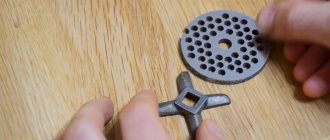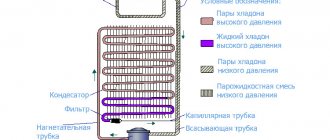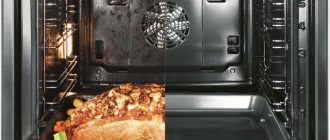Home Tips for the home
Nowadays, many of us have air conditioners at home. And this is good, because this technique allows us not only to cool down, but also to quickly heat the air in the house on winter evenings.
However, many people wonder, does air conditioning dry or humidify the air? In order not to beat around the bush, we will present to your attention the answer to this question in this article.
Reasons why air conditioners dry the air
Yes, in fact, the air conditioner dries the air, but they only start doing this when they have been running for a long time.
Have you ever noticed that each of the currently existing air conditioners has a special unit, which is located on the outdoor part of the room. It also has a hose from which moisture flows out. How does it get there and, exactly, where does it come from?
How does the air conditioning system work?
The design of the air conditioner consists of two parts: the one in the room (internal) and the external one. In cooling mode, freon (refrigerant) is produced in the outer part. The pressure heats it up, and the vapors are released into the atmosphere.
The cooled refrigerant enters the inside of the air conditioner. Here it increases in size, taking heat from the atmosphere. As a result, the temperature in the room decreases. And water droplets appear on the cold heat exchanger - condensation. It is discharged outside through the drainage system.
So, does the device dry out the air? Let’s look at several methods of operation at once.
creativecommons.org
Air conditioners dry the air in cooling mode
The answer to this question is quite simple. The air conditioner takes in and draws warm air into itself and cools it. However, during its sudden cooling, it produces condensation, and the air begins to lose some of its moisture.
For this purpose, a drainage system is designed in the air conditioner, which removes moisture from it.
Operating principle of the “drying” mode
The principle of operation of climate control equipment in the specified mode begins with the launch of the “Dry” option. Translated into Russian, this concept is interpreted as “drying”. The location of the described option can be on the touch panel in the form of a line or placed as a separate button on the remote control. This program starts working by pressing the remote control.
The operation of a dehumidification system is similar to that of air cooling:
- radiator cooling in the indoor unit;
- contact of air masses forced by the fan with the radiator walls;
- heat transfer by air;
- condensation of moisture from the air onto the surface of the radiator;
- collecting liquid with special tubes and then removing it through a drainage hose;
- return flow of cold air into the space.
Please note: A container must be installed next to the drainage hose to collect the draining liquid. Periodically it requires emptying!
Approximate cycle of operation of a split system:
- drying (10 min);
- switching off the device (5 min);
- increased ventilator activity (2 min);
- repeat the cycle.
In heating mode the air dries out
In this case, everything is quite simple. Don't blame the air conditioner, radiators, or other heating elements in your home. The air that enters the room itself contains a small amount of moisture.
The lower its temperature, the less moisture it can hold. When the air comes into your home, it begins to heat up and becomes capable of absorbing a large amount of moisture, but it has nowhere to take it from. This is why you get the feeling that the apartment or house is a little dry.
The optimal temperature for your home is 20-24 degrees, and the humidity level is about 35-65%. In order to monitor these indicators, you just need to use a hygrometer and thermometer.
general information
Nowadays you won’t surprise anyone with air conditioning. These compact and functional devices are found in many homes, apartments and offices. They are designed to cool and heat air. The air conditioner is designed to provide a good indoor microclimate in the summer or in the off-season.
Air conditioners in the budget price range with a minimal set of functions have one significant drawback - air dehumidification. This problem can be solved only in one way - to humidify the air forcibly.
The task can be entrusted to air humidifiers that operate on water and are sold in many hardware stores. However, when choosing an air conditioner, we recommend that you immediately buy a device with a built-in humidifier so as not to worry about purchasing additional devices.
Air conditioners from the middle and high price categories are often equipped with humidification and air purification, which is very convenient. Most often, such devices are floor-mounted and wall-mounted. Wall-mounted is the most popular because it does not take up space in the room and works more efficiently.
Is constantly dry air safe?
In an hour of continuous operation of the air conditioner, it can reduce the humidity in your room by 10 to 30 percent. If your home is dry, the skin and mucous membranes of your body will first begin to suffer.
It is extremely difficult for people with allergies to endure this nuisance. As for more serious problems, the lungs begin to worsen the process of oxygen absorption, and blood clotting begins to increase.
Such dryness also harms books and furniture, they begin to deteriorate. Also, it begins to have a negative impact on both plants and animals. However, all these problems can only arise if you use the air conditioner for a long time and regularly.
conclusions
When planning to choose climate control equipment with an air dehumidification function, preference should be given only to proven manufacturers from Asia and Europe. Before purchasing, you should definitely study the technical characteristics of the model, and also compare them with the parameters of your room, since the ability of the device to cope with the task will depend on this.
The installation of a split system should only be entrusted to qualified craftsmen who can carry out the work competently, in strict accordance with the requirements of the factory regulations, including carrying out the necessary commissioning work. When selecting, you should also take into account recommendations from the sales consultant.
How can you maintain an optimal level of humidity in a room?
Let us present to your attention several simple, but at the same time effective ways to increase or normalize the level of humidity in your home or apartment:
- Set the split system of your air conditioner to a temperature that does not differ from room temperature.
- It is best to program at 23-25 degrees.
- Buy special moisturizing devices for your home.
- We recommend placing containers of water indoors, and it is best to buy yourself aquariums.
- It is best not to waste money and buy yourself an air conditioner that has additional functions for cleaning and humidifying the air.
- The fastest and most optimal way to increase the humidity level in a room is to hang wet fabrics (for example, a towel).
- Ventilate your room daily.
As you can see, everything is quite simple. We wish you good luck!
Results
Moisturizing conditioner is technologically advanced, easy to use, effective and... expensive. This is the most practical solution if you want not only to air condition the room, but also to maintain a comfortable microclimate in it. However, you will have to pay extra for such features.
If you're not willing to spend $2,000 on a modern air conditioner with humidification, buy a regular unit and a portable water-powered humidifier. This is a less effective and convenient solution, but it will be a real salvation if you don’t have a lot of money and a good microclimate is important.
We do not recommend using air conditioners without additional humidification, as this may negatively affect your productivity and quality of sleep. One way or another, it is better to take care in advance about what devices and technologies you will use to create the correct microclimate in your home or office.
How to normalize the level of moisture in the air
Having found out whether the air conditioner dries the air and convinced of the negative impact of this phenomenon, it is necessary to solve the problem of normalizing humidity.
In essence, there is only one method of solving the problem - to bring water into the atmosphere from the outside. And how it will be implemented is a matter of everyone’s taste. Offhand, the most common design solutions are recognized as:
- Bowl of water. Due to the natural process of evaporation, the liquid gradually passes from the bowl into the environment. Pros - no material costs, Cons - no control over the process.
- A bowl of water with a fan pointed at it. This design has every right to be called a humidifier - you can even change the productivity due to the air flow.
- Aquarium. Same bowl, only bigger. Plus, it’s beautiful, and watching fish calms the psyche. The downside is that it is quite a costly and troublesome task. All the necessary accessories cost a lot of money, and the fish require constant care. Well, there is no humidity control.
- Indoor flowers. All plants evaporate moisture from the surface of their leaves, while automatically trying to adjust the climatic conditions of the room to optimal parameters. Two or three flower pots in the room will help solve the problem, but not completely - plants are not able to compensate for a large leak. Advantages: beautiful, many specimens do not require special care. Disadvantages - like all living organisms, they are susceptible to diseases and some attention will still have to be paid. An allergy to pollen or sap is also possible.
- Automatic humidifier. There are a great many modifications and the user only needs to choose the optimal configuration. Advantages: adjustability, automation through sensors does not require intervention in its operation. Disadvantages - price. The more capabilities a device has, the faster its cost increases.
It is best, of course, to use a specialized device that will allow a busy person to avoid unnecessary hassle. Not everyone will find an extra day to exercise with an aquarium or fuss with basins full of water.
Permissible humidity standards and its effect on the human body
According to current sanitary standards and rules, the permissible percentage of moisture in residential premises ranges from 40% to 60%, and in the average climate zone the natural level fluctuates around seventy percent.
During operation, a refrigeration unit can easily reduce this percentage to 30, and under some conditions - to 20. To understand whether this is a lot or a little, remember the Sahara Desert. So, the humidity there ranges from 50% to 30%. That is, being in a familiar room, you can create climatic conditions worse than the sandy regions of the planet.
Air humidity affects:
- The ability of the lungs to absorb oxygen.
- Condition of the mucous membranes.
- Elasticity and protective properties of the skin.
- Human performance.
- General health and resistance to disease.
- The development of allergic reactions to irritants that were previously associated with water - dust, animal hair, synthetic fibers.
In addition to its effect on people, dryness also has a negative effect on things - wood cracks and warps, paper becomes brittle, books fall apart due to glue drying out.
When and how to turn on the mode
As you know, heat is more difficult to tolerate in high air humidity. Therefore, in such cases, turning on the “Dry” option allows you to breathe more comfortably. You can turn it on if necessary by pressing the corresponding button on the remote control or by clicking on the desired menu line. The “Dry” option leads to the disappearance of stuffiness, making the air more comfortable to breathe. By the way, the temperature background does not change!
Most household split systems are capable of removing excess moisture from the air, while minimizing the risk of developing many unpleasant consequences for the body and apartment. Thus, setting the set temperature in the room leads to the inclusion of the “Dry” mode. As soon as the humidity becomes optimal, a sensor is triggered giving a command to reduce the fan speed.
A special valve helps maintain a comfortable temperature for residents in the room when the “drying” option is turned on. It is its activity that helps block the flow of freon to the heat exchanger.
Of course, the inclusion of a “drying” function in the air conditioner is a big plus for its owners. You just need to use such a unit when necessary, otherwise the dried air can negatively affect many interior items and human health.











